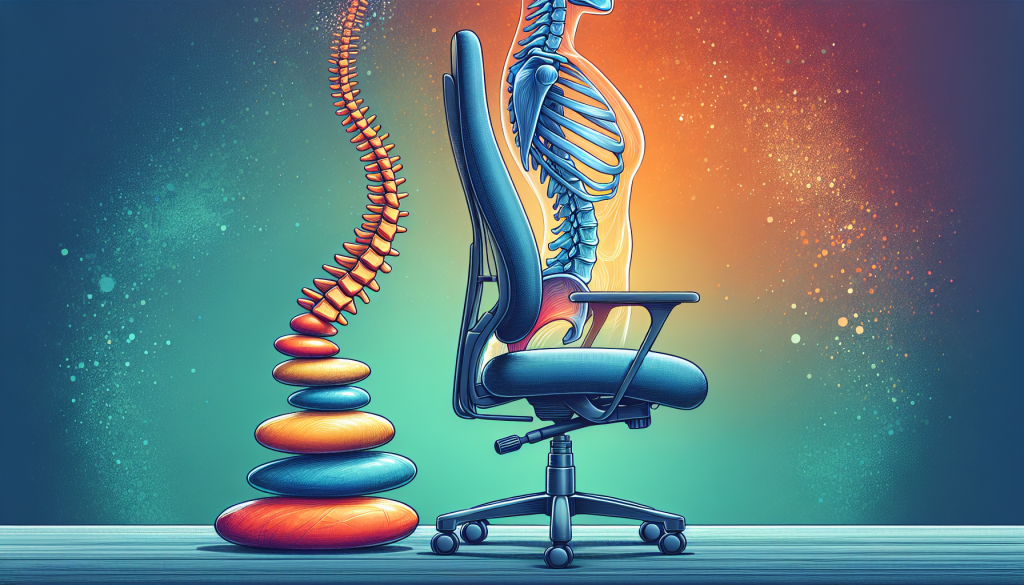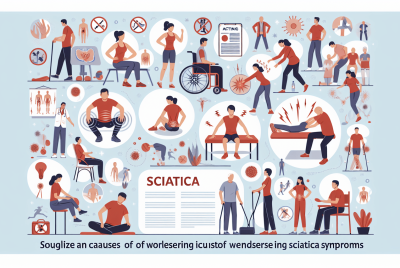Top Tips for Relieving Back Pain by Maintaining Good Posture
Are you tired of dealing with constant back pain? Look no further, because in this article, we will share with you the top tips for relieving back pain by maintaining good posture. Whether you spend long hours sitting at a desk or lifting heavy objects, these key tips for maintaining good posture will help alleviate your discomfort and improve your overall well-being. Say goodbye to those achy back muscles and say hello to a pain-free life with these simple and effective posture habits.
Use a Supportive Chair
When it comes to maintaining good posture and relieving back pain, using a supportive chair is crucial. A supportive chair provides the necessary support and stability for your spine, ensuring that it remains aligned and in a neutral position. Look for a chair that has a firm cushion and adjustable features such as height and tilt. This will allow you to find the most comfortable and ergonomically correct position for your body. Avoid chairs that are too soft or allow you to sink in, as they can encourage poor posture and contribute to back pain.
Adjust the Chair Ergonomically
Once you have found a supportive chair, it is important to adjust it ergonomically. Start by adjusting the chair height so that your feet are flat on the floor and your knees are at a 90-degree angle. This will help distribute your body weight evenly and prevent your legs from becoming tired or strained. Next, adjust the backrest of the chair so that it supports the natural curve of your spine. This will provide optimal support and help maintain good posture throughout the day. Finally, adjust the armrests so that your arms are at a comfortable height, allowing your shoulders to relax.

Sit with Backrest Support
Simply sitting on a chair is not enough to maintain good posture and relieve back pain. You must also ensure that you utilize the backrest support provided by the chair. Sit with your back pressed against the backrest, making sure that your entire back is supported. This will prevent you from slouching or leaning forward, which can strain your back muscles and lead to pain and discomfort. By utilizing the backrest support, you will be able to maintain a neutral spine position and alleviate stress on your back.
Avoid Slouching
Slouching is a common habit that many people have, especially when sitting for extended periods of time. However, slouching can have detrimental effects on your posture and lead to back pain. To avoid slouching, consciously maintain proper posture by sitting up straight and keeping your shoulders back. Engage your core muscles to support your spine and keep your back in alignment. If you find yourself slouching, gently remind yourself to sit up straight and readjust your posture. Over time, this practice will become a habit and you will notice a significant improvement in your posture and reduction in back pain.

Keep Feet Flat on the Floor
One important aspect of maintaining good posture is keeping your feet flat on the floor. This helps to evenly distribute your body weight and reduce strain on your lower back. Make sure that your chair is adjusted to a height where your feet can comfortably rest flat on the floor. If your feet do not reach the floor, consider using a footrest or an adjustable desk to ensure proper alignment. By keeping your feet flat on the floor, you will promote better posture and alleviate unnecessary stress on your back.
Use a Cushion or Lumbar Roll
Sometimes, even with a supportive chair and proper adjustments, you may still experience discomfort in your lower back. In such cases, using a cushion or lumbar roll can provide additional support and help alleviate back pain. A lumbar roll, specifically designed to support the natural curve of your lower back, can be placed between your lower back and the chair to provide extra lumbar support. This helps to maintain the natural curve of your spine and relieve pressure on the discs and muscles in your lower back. Alternatively, a cushion can be used to provide support and comfort for the entire back. Experiment with different types of cushions or lumbar rolls to find the one that works best for you.

Take Regular Breaks
Sitting for prolonged periods can be detrimental to your posture and back health. Taking regular breaks to move and stretch is essential for maintaining good posture and relieving back pain. Stand up and walk around every hour or so, even if it’s just for a few minutes. Use this opportunity to stretch your back, shoulders, and neck. Perform simple exercises like shoulder rolls, neck stretches, and gentle back bends to release tension and improve flexibility. Regular breaks not only help break the monotony of sitting, but they also allow your muscles to relax and reduce the risk of developing back pain.
Strengthen Core Muscles
The muscles in your core play a significant role in maintaining good posture and supporting your spine. By strengthening these muscles, you can better support your back and prevent the onset of back pain. Incorporate exercises that target your core, such as planks, bridges, and abdominal crunches, into your fitness routine. Gradually increase the intensity and duration of these exercises as your core muscles become stronger. Strengthening your core will improve your stability, promote proper alignment, and ultimately reduce the incidence of back pain associated with poor posture.

Stretch Regularly
Stretching regularly is another effective way to maintain good posture and alleviate back pain. Incorporate stretching exercises into your daily routine to improve flexibility, release tension in your muscles, and promote proper alignment. Stretching your back, neck, shoulders, and leg muscles can help counteract the negative effects of prolonged sitting and relieve discomfort. Aim to stretch for a few minutes multiple times a day, focusing on areas that feel tight or strained. Remember to perform stretches gently and do not push beyond your comfort level to avoid injury.
Maintain Proper Sleeping Posture
It’s not just about maintaining good posture while seated, but also while you sleep. Proper sleeping posture is essential for allowing your back to rest and recover from the day’s activities. To achieve proper sleeping posture, invest in a supportive mattress and pillow that align with the natural curves of your spine. Whether you sleep on your back, side, or stomach, make sure your spine remains in a neutral position. Avoid sleeping in positions that strain your back, such as hunching over or sleeping in a twisted position. By practicing proper sleeping posture, you give your back the opportunity to heal and rejuvenate, leading to reduced back pain throughout the day.
In conclusion, maintaining good posture is crucial for relieving back pain and promoting overall spinal health. By using a supportive chair, adjusting it ergonomically, utilizing the backrest support, and avoiding slouching, you can significantly improve your posture and alleviate back pain. Keeping your feet flat on the floor, using a cushion or lumbar roll for extra support, and taking regular breaks to stretch can further enhance the benefits of good posture. Strengthening your core muscles and practicing proper sleeping posture also contribute to maintaining a healthy spine. Incorporate these tips into your daily routine for long-lasting relief from back pain and a more comfortable, healthier lifestyle.




